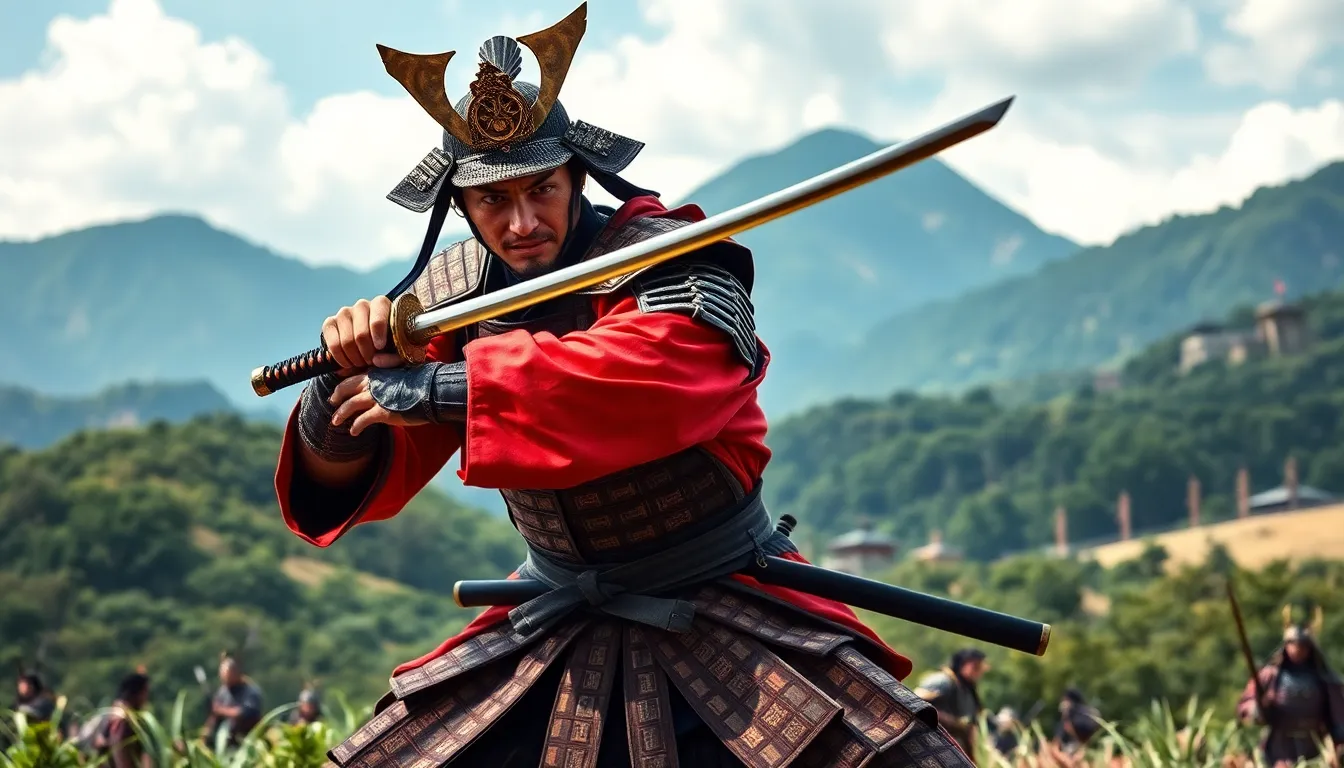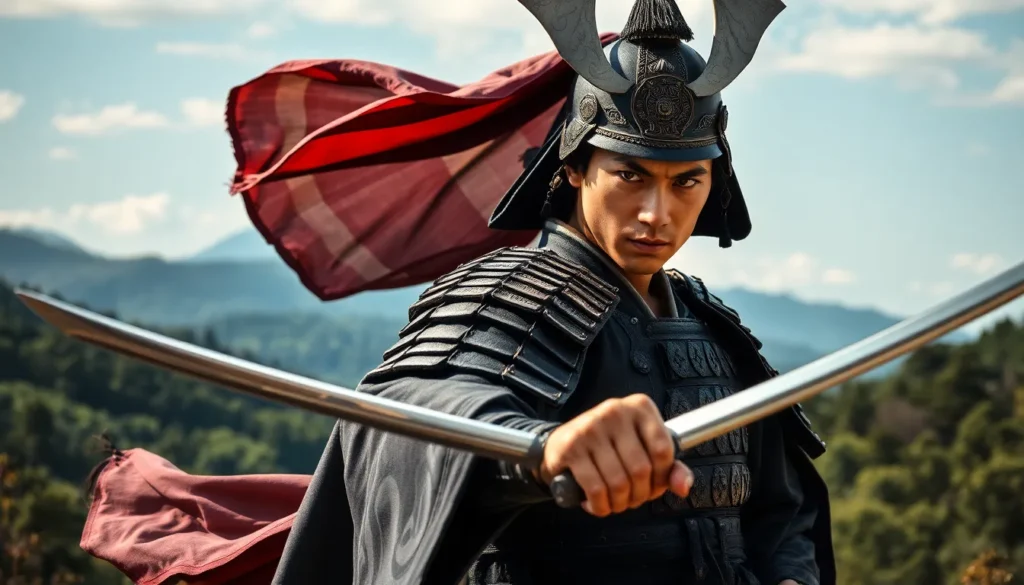In the world of video games, few titles manage to blend breathtaking visuals with a combat system that feels as fluid as a samurai’s sword slice. Ghost of Tsushima does just that, inviting players to step into the sandals of Jin Sakai, a warrior torn between tradition and innovation. It’s not just about swinging a katana; it’s about mastering the art of combat while battling the Mongol invasion.
Table of Contents
ToggleOverview of Ghost of Tsushima
Ghost of Tsushima offers players a rich and engaging environment set in feudal Japan. The game immerses individuals in stunning visuals that showcase vast landscapes, including lush forests, rolling hills, and iconic landmarks. Each location plays a role in the experience, adding depth to the protagonist’s journey.
Jin Sakai, the main character, evolves from a samurai into a stealthy warrior. Key features of the combat system include a blend of traditional sword fighting and stealth tactics. Players can switch between different combat styles, such as the Samurai stance for head-on battles or the Ghost stance for surprise attacks. Techniques like parrying and dodging emphasize precision, providing rewarding gameplay.
Exploration greatly enhances the experience. Players discover hidden items, upgrade their abilities, and encounter diverse NPCs, which enrich the narrative. Side quests often reveal the plight of villages under Mongol rule, creating emotional connections.
The dynamic AI behavior of enemies requires players to adapt strategies continuously. Combat encounters vary in difficulty, requiring both skill and strategy. Cooperative tactics become crucial when facing multiple adversaries.
Additionally, the game’s narrative structure enhances engagement. Themes of honor, sacrifice, and the struggle for identity resonate throughout. Players witness Jin’s transformation as he grapples with his choices and values amidst conflict.
Ultimately, Ghost of Tsushima combines action, exploration, and storytelling, ensuring a memorable gaming experience. Its combat system stands out as a significant element that players find both challenging and rewarding.
Key Features of the Combat System

The combat system in “Ghost of Tsushima” showcases innovative mechanics that enhance gameplay immersion. Players experience dynamic interactions in combat through unique features.
Stance Mechanic
Jin can switch between four distinct stances, each designed for specific enemy types. The Samurai stance excels against standard foes, while the Dancing Crane stance targets shielded adversaries. Mimicking this approach, the Unyielding stance counters armored enemies effectively. Utilizing the Ghost stance allows for stealthy, high-damage attacks from the shadows. Switching stances strategically enhances combat flow and ensures adaptability during intense battles.
Combat Styles
Combat styles in “Ghost of Tsushima” provide significant diversity, accommodating different play styles. The fast-paced offensive style emphasizes agility and quick strikes. Alternatively, a defensive approach focuses on parrying and counterattacks, rewarding precision timing. Stealthy players can thrive by employing assassination techniques, eliminating foes quietly. Each style not only caters to unique gameplay preferences but also encourages experimentation, enriching the overall combat experience.
Weaponry and Equipment
Weaponry and equipment in “Ghost of Tsushima” play a crucial role in Jin’s journey. He utilizes various weapons and tools that enhance combat effectiveness while offering strategic options during battles.
Katana vs. Other Weapons
Jin’s katana serves as the primary weapon, symbolizing his samurai heritage. This sword offers unmatched precision and speed, allowing players to execute swift melee attacks. Other weapons include the tanto, a dagger ideal for stealth kills and quick strikes. Additionally, Jin can wield a longbow, perfect for ranged combat, enabling players to pick off enemies from a distance. Each weapon complements different combat styles. The katana excels in close-quarters confrontations, while the longbow provides tactical advantages. Players find balancing these weapons essential for adapting to various enemy types and combat situations.
Tools and Gadgets
Tools and gadgets enhance gameplay and combat strategies. Smoke bombs provide cover, allowing for stealthy escapes or surprise attacks. Sticky bombs offer explosive damage, useful for dispatching groups of enemies. Jin uses a grappling hook for vertical mobility, facilitating exploration and quick escapes. The kunai acts as a throwing weapon for disorienting foes. Players can strategically combine these gadgets with weapons for efficient combat. Mastering these tools adds depth to the gameplay, encouraging creativity in overcoming challenges. Each tool brings its strengths, allowing players to tailor their approach during encounters.
Enemy Types and Strategies
“Ghost of Tsushima” features a variety of enemy types, each requiring unique approaches for effective combat. Players face common foes such as Mongol soldiers, who come in different ranks, ranging from low-level grunts to heavily armored brutes. In addition, archers pose a significant threat from a distance, necessitating quick reflexes to dodge or deflect attacks. Shielded enemies demand stance-switching, where using the Dancing Crane stance helps break defenses. Adaptation is crucial when engaging multiple types simultaneously.
Common Enemy Types
Common enemy types include spearmen, swordsmen, and archers, each exhibiting distinct combat styles. Spearmen attack with thrusts and keep distance, often countered by dodging or sidestepping. Swordsmen engage in melee, where timing and precision enhance combat success. Archers provide ranged pressure, requiring players to use stealth or quick movements to close gaps. Understanding their patterns empowers players to effectively counter and leverage the right combat stances.
Boss Battles and Tactics
Boss battles present heightened challenges, demanding strategic execution and patience. Players encounter iconic warlords with unique abilities and advanced tactics. Observing attack patterns allows Jin to time his counters effectively. Using the Ghost stance enables high-damage sneak attacks, creating opportunities for quick victories. In these engagements, environmental awareness proves essential, as players can use surroundings to their advantage. Staying patient and remaining adaptable leads to triumph against these formidable foes.
Visual and Audio Design in Combat
The visual and audio design in “Ghost of Tsushima” significantly enhances the combat experience. Stunning art direction showcases a beautiful world that draws players into feudal Japan.
Art Style and Animation
Art style and animation stand out with vibrant colors and detailed environments. Each frame captures the essence of Japanese landscapes, from sweeping vistas to delicate cherry blossoms. Characters move fluidly, reflecting a strong focus on realism. Animations during combat impress with their precision, emphasizing the impact of sword strikes and parries. Fluid motion contributes to a visceral feel, ensuring players connect with Jin’s actions. Stances transition smoothly, allowing for strategic movement while facing different enemies.
Sound Design and Music
Sound design and music play critical roles in immersing players. Each clash of swords resonates through the environment, enhancing the intensity of battles. Ambient sounds, such as rustling leaves, enrich the atmosphere and provide context to the surroundings. A dynamic musical score shifts with the action, heightening emotions during combat scenarios. Each track captures the spirit of the samurai’s struggle, reinforcing themes of honor and sacrifice. Overall, these elements combine, creating an unforgettable auditory experience that complements the visual splendor.
The combat system in “Ghost of Tsushima” stands out as a masterclass in gameplay design. Its blend of traditional samurai techniques and stealth tactics invites players to explore various strategies while adapting to the dynamic challenges presented by diverse enemies. The fluidity of combat mechanics, combined with the stunning visuals and immersive sound design, creates an engaging experience that resonates deeply with players.
As Jin Sakai evolves throughout his journey, so does the player’s understanding of combat intricacies. The emphasis on adaptability and precision ensures that every encounter feels unique and rewarding. Ultimately, the combat system not only enhances gameplay but also enriches the narrative, making “Ghost of Tsushima” a memorable adventure in feudal Japan.

